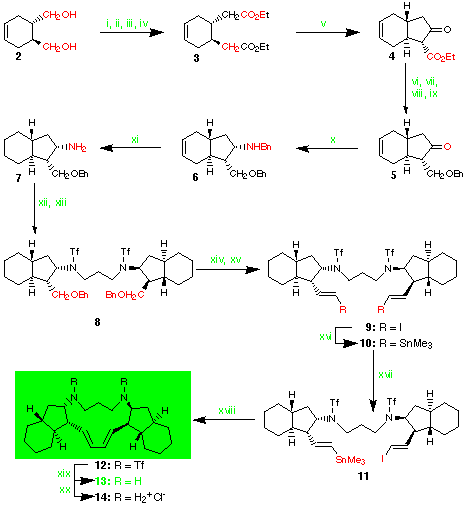M/s submitted to
Chemistry in Britain.
Please address all correspondence to:
Prof Mark J Winter
Department of Chemistry
The University of
Sheffield
Sheffield S3 7HF, UK.
M.Winter@Sheffield.ac.uk
Modification Date: Wednesday, March 29, 1995
Several mechanisms exist for extending World Wide Web hyperlinks beyond simple
text to two and three dimensional molecular structures. One such involves a
mapping technique in which hyperlinks can appear to be associated with
two-dimensional chemical features such as atoms, bonds or functional groups. In
the example below, the synthetic strategy leading to the synthesis of
papuamine[1] is explored via
two-dimensional retrosynthetic scheme. This diagram has a number of defined
"hotspots" involving selected functional groups and the reagents involved in
each transformation. When activated with a press of the mouse button, these
hyperlinks provide the user with further details of each step. The effect is to
avoid excessive detail in the original diagram by presenting only the main
points, whilst still retaining an access mechanism for the detail.

One application of such a display would be an electronic poster, examples of
which are to be found in the Electronic Conference on Trends in Organic
Chemistry,[2] or the very successful
ECCC conference from November 1994.[3]

